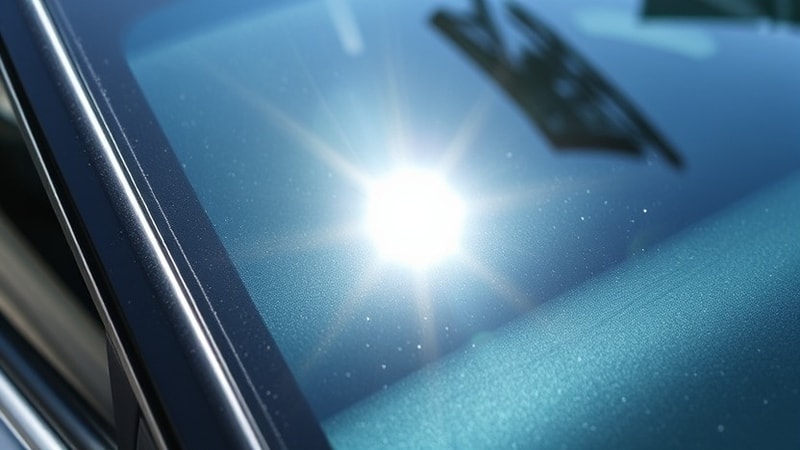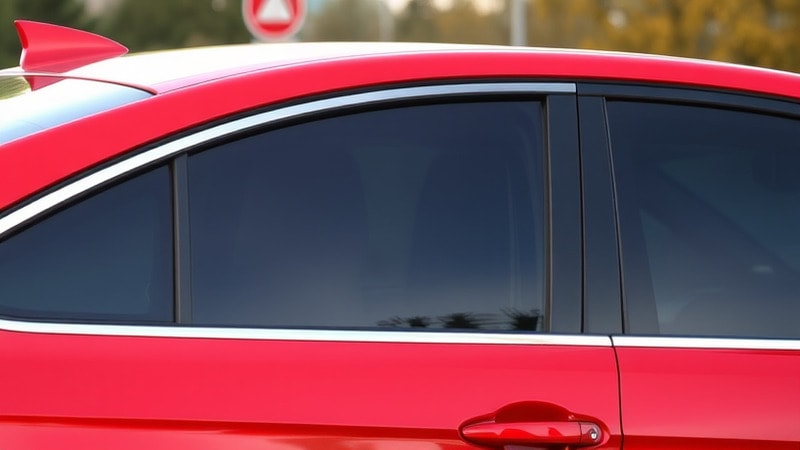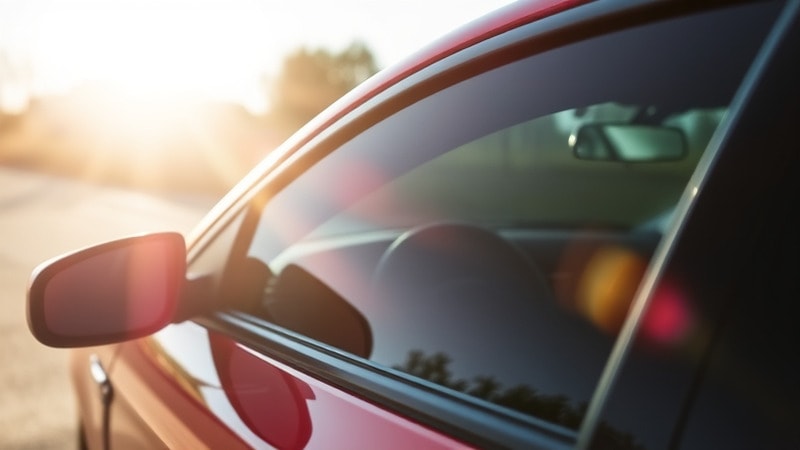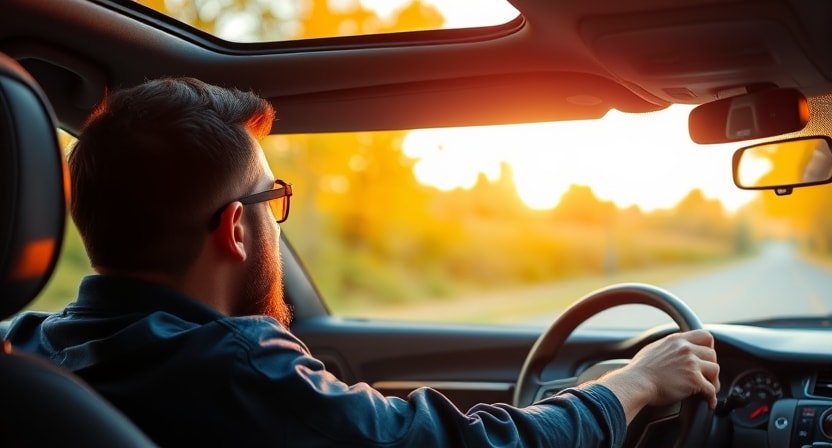Want the perfect window tint but unsure about the percentage? Discover the sleek, stylish benefits of a 20% tint, blocking 80% of light while enhancing privacy and UV protection. Learn the key laws and expert tips to avoid fines and maximize performance. Get the essential guide to smart tinting now!
What is Window Tint?
A window tint is a thin film that is applied to the interior or exterior surface of a vehicle’s window. While it is a means for enhancing the aesthetic look of a car, it offers more than that. The functional benefits of window tints include reducing heat and glare.
These tint films also act as protective shields by blocking the ultraviolet and infrared rays from damaging your car’s upholstery. However, one of the most appealing aspects of window tints is the privacy it provides.
Limiting the visibility into the vehicle, the tint not only protects you from outsiders’ glaring but also reduces car break-ins.

Window tints are available in a variety of shades, ranging from ultra-dark 5 percent to the lighter 50 percent. The lower the percentage, the less light crosses the barrier or the higher the light-blocking ability.
Window tinting is the solution to your privacy and your car’s aesthetic enhancement.
How Window Tinting Works?
The process is quite simple and straightforward. You apply a thin film to your window, which in turn reduces the amount of light entering your vehicle.
However, the science behind window tint is not as simple. There are specialized particles, often metals, inside the tint that absorb and reflect light rays as well as UV rays.

A tint’s ability to essentially block our sunlight and harmful UV and infrared rays has elevated its status in privacy and protection markets. It acts as a shield between the warm sun rays and the car’s interior, i.e., keeping it cool.
By filtering out the light rays, window tints keep the temperature inside a vehicle cooler even during peak summer months.
One of the key purposes of window tinting is to provide comfort and privacy. It makes it more difficult for outsiders to see inside the cabin by lowering the quantity of visible light.

Tinted windows also reduce glare from the sun and headlights, which improves visibility and reduces eye strain when driving.
In addition to being aesthetically pleasing, window tinting is a practical improvement that guards against UV rays, protects the upholstery, and makes driving safer and more pleasant.
What Is 20% Window Tint? Key Benefits Explained

Now that you know the basics of window tinting, you should explore the benefits of all percentages of window tints.
Here, we have covered the benefits of a 20 percent window tint. Generally, a 20 percent tint blocks out almost 80 percent of the light, which is a significant amount to begin with. But it has some other benefits as well.
Let’s explore them all.
Reducing Glare and Eye Strain
Driving at any time can feel like a burden if glares, either from sunlight during the day or headlights during the night, pierce your retinas. As a 20 percent tint blocks away 80 percent of both light rays, it significantly lowers the intensity of incoming light, making driving safer and more enjoyable.

It reduces the sharp reflection of LED headlights coming through rear windows, which can strain your eyes and disrupt your concentration.
Tinted windows reduce glare, resulting in a clearer, more comfortable driving experience, particularly on lengthy trips or in low-light settings where other drivers opt for high beams.
Thus, window tint films are necessary for fleet cars due to the advantages of reducing glare and heat.

Protection from UV Rays
One of the most significant benefits of window tinting is that it can filter up to 99% of dangerous UV radiation. UV rays not only harm the skin but can also cause your vehicle’s interior, such as upholstery, dashboard, and finishes, to deteriorate over time.
A 20% tint serves as a protective shield, preserving the integrity and beauty of your car’s interior. High-quality window tint films, such as ceramic window tint, are cost-effective.
Because they can protect your car windows by avoiding fading and cracking, saving you money on repairs and replacement.
Maintaining a Cooler Interior
A 20 percent tint effectively reduces infrared rays entering your car, thus reducing the amount of heat and making your car’s environment cooler. As a result, it will lower your need for air conditioning, which can result in increased fuel efficiency, thus saving on cost.

Moreover, the tinted windows are able to block heat continuously, thus providing a comfortable driving experience, especially for the passengers sitting behind.
Increased Privacy and Security
If, as a car owner, you value privacy more than anything, then a 20 percent tint can add an extra degree of seclusion. It blocks the view into your vehicle, preventing intruders from viewing valuables or personal goods.
This increased privacy not only provides peace of mind but also acts as a deterrent to possible theft. Tinted windows help protect your vehicle and its contents, whether you’re parked in a busy lot or driving down city streets.

Legal Considerations for 20 Tint
Understanding the legal requirements for window tinting is essential before making any changes to your vehicle. Regulations vary by state and define the acceptable tint percentage for particular windows.
Compliance with these guidelines allows you to choose a legal tint film and enjoy the benefits of tinting while avoiding penalties or fines.

Overview of Tint Percentages and Legal Requirements by State
Each state in the United States has its own standards regarding the allowable Visible Light Transmission (VLT) percentage for car windows.
A 20% tint, which allows 20% of light through while blocking 80%, is regarded as exceptionally dark and may be illegal in many areas for some windows, especially front ones.
For example, California legislation mandates front-side windows to have at least 70% VLT, essentially barring 20% tinting. Similarly, New York requires at least 70% VLT on front side windows.

However, restrictions vary greatly by state, and some states allow 20% tint on specific windows. Before applying a 20% tint, it is critical that you research and understand the unique laws in your state or region to ensure compliance.
Special Focus: Laws for Front, Rear, and Side Windows
Tinting laws frequently differentiate between front, rear, and side windows. The front windshield often has the strictest regulations, allowing only a light, non-reflective tint that can last for 12 to 24 months on the top few inches.
Front-side windows typically need a greater VLT percentage (e.g., 70%) to ensure visibility for law enforcement and other drivers.

Rear-side and back windows are often more flexible, with several jurisdictions permitting deeper shades up to 20%. However, some vehicles, such as SUVs and trucks, may have additional allowances for rear windows. Knowing these nuances allows you to stay within the law when customizing your car.
The table below provides an overview of popular states and their legislation regarding 20% window tint.
| State | Front Side Windows | Rear Side Windows | Rear Window | Windshield Restrictions |
|---|---|---|---|---|
| California | Minimum 70% VLT | No restriction | No restriction | Tint allowed on top 4 inches only |
| New York | Minimum 70% VLT | Minimum 70% VLT | No restriction | Tint allowed on top 6 inches only |
| Texas | Minimum 25% VLT | Minimum 25% VLT | No restriction | Tint allowed above AS-1 line or top 5 inches, whichever comes first |
| Florida | Minimum 28% VLT | Minimum 15% VLT | Minimum 15% VLT | Non-reflective tint allowed above AS-1 line |

Please keep in mind that these restrictions are subject to change, so before applying window tint to your car, you should check with your state’s Department of Motor Vehicles or a local law enforcement agency for the most up-to-date information.
How to Ensure Compliance?
To ensure compliance with your state laws, you should consider consulting a professional installer who is educated in local standards to confirm that your 20% tint is legal. They can recommend the most appropriate VLT percentages for your car while sticking to legal requirements.
In addition, always seek proof of compliance or a label certifying the legality of the tint, as this might be useful during inspections. To avoid surprise penalties, you should study updated laws in your area on a regular basis, as restrictions change over time.
By following these instructions, you can enjoy the benefits of window tinting while remaining within the legal boundaries.

How to Choose the Right Window Tint for Your Car
Choosing the best window tint involves considering a variety of factors, such as light transmission, local legislation, and personal tastes. To achieve your goals, your chosen option should strike a mix between functionality, aesthetics, and compliance.
Let’s go over the factors to consider and guide to VLT shades together.
Factors to Consider
There are many factors that need to be considered while getting your window tinted, but these are some of the most important ones.

Visible Light Transmission (VLT) Percentage
Understand the visible light transmission percentage of the tint you are getting. The percentage of tint represents the amount of light it allows to pass; the rest is blocked off. For example, 30 percent window tints obscure about 70 percent of light, UV, and infrared rays.
The same goes for the rest of the tint percentages, with 5 percent being the darkest and 70 percent being the lightest shade in the market right now.

Local Laws and Regulations
Each state has custom rules and regulations regarding tint percentages for different windows. If a state allows 20 percent tint on passenger windows, it doesn’t mean you can apply it all over your car. Each window has its own allowable tint percentages that need to be followed strictly.
So before you get your car windows tinted, ensure your choice aligns with the legal limits in your area.
Style and Functionality Preferences
A car is a very private belonging, and every aspect of it should reflect your style choices. Choose the tint that matches your aesthetic. But make sure it is legal so you don’t end up wasting your investment and paying a fine.
If you are getting a window tint solely for practical purposes, then consider functionality factors. Pick one functionality and choose the tint that best fulfills your needs, whether it is privacy, glare reduction, or heat reduction.

Tint Car Windows: A Guide to VLT Shades
Understanding the various Visible Light Transmission (VLT) percentages is critical for selecting an appropriate window tint. A 20% window tint is a dynamic option that provides a mix of appearance and practicality, providing considerable seclusion while effectively reducing heat.
For individuals who value visibility and a lighter interior feel, lighter tints, such as 35%, are a wonderful alternative. The 35 percent tints are usually authorized for front windows in many jurisdictions as well.
Darker shades, such as 5%, often known as “limo tint,” provide maximum privacy and great heat reduction but can reduce visibility, especially at night. The darker tints are also very limited in application, as they are used for high-end individuals for safety purposes.

Comparing Tint Percentages: Why Choose 20%?
While each tint has its own benefits and use cases, the 20 percent tint offers a middle ground. It not only enhances the aesthetic appeal of the car but also provides enough privacy. Here is a comparison table of all types of window tints so you can make an informed decision.
| VLT Shade | Privacy | Visibility |
|---|---|---|
| 5% (Limo Tint) | Maximum privacy | Very limited, especially at night |
| 20% Tint | Good privacy | Moderate, suitable for day and night |
| 35% Tint | Moderate privacy | Excellent visibility |
| 50% Tint | Minimal privacy | Maximum visibility |
| 70% Tint | Very minimal privacy | Almost clear; maximum visibility |
Installation Tips and Maintenance for 20% Window Tint

The effectiveness and lifespan of window tints depend on two factors: installation and maintenance. During installation, attention to detail is crucial, whether you hire a professional or do it yourself. We’ll walk you through installation instructions and best practices to keep your tint in excellent condition.
Professional Window Tint Installation
Hiring a professional for window tint installation is the ideal way to achieve a smooth, bubble-free finish that improves both the beauty and durability of the tint. Professionals utilize high-quality window films that are specific to your vehicle’s make and model, ensuring compatibility and best performance.
However, if you decide to do window tint installation as a DIY project, then take your time to learn about the steps. To get the best results and avoid premature damage or defects, follow the manufacturer’s installation and curing time requirements.

Caring for Your Tinted Windows
Proper care and maintenance can greatly extend the life of your tinted windows. To avoid scratching the film, clean the surface with a mild, soapy solution and a soft cloth. Avoid using harsh chemicals, abrasive materials, or ammonia-based cleansers since they can weaken the color or cause it to peel.
Regular inspections are also necessary; look for signs of peeling, bubbling, or fading and treat any concerns as soon as possible to maintain the tint’s effectiveness and visual appeal.
FAQs
Q1. Can I apply a 20% tint myself?
Yes, you can install the window tint using DIY kits and follow certain steps. But professionals have the knowledge to apply the film with no bubbles or defects, and they can advise on legal compliance.
Q2. Will a 20% tint keep my car cool?
Yes, a 20% tint can reduce the amount of heat that enters your car by blocking a large portion of solar energy. This can result in a cooler interior, particularly during hot weather. In some cases, it can also reduce the need for air conditioning.
Q3. Do you offer custom sizes and tint levels?
Yes, Carlike provides a range of customization options, including various sizes and tint levels. Our team will work with you to ensure the window tint films meet your specific requirements.
Q4. What is the minimum order quantity (MOQ) for window tint films?
Our standard MOQ is 10 rolls, but we are flexible and can accommodate smaller orders to help new customers evaluate our products.
Conclusion
Window tint enhances privacy, blocks harmful UV rays, and reduces heat. 20% tint offers optimal balance, providing shade while maintaining visibility. Check local laws before installation.
Choose quality materials for durability, and follow proper maintenance to ensure long-lasting performance. Transform your car window tint films for comfort, safety, and style!
High-Quality 20% Window Tint – Get Your Instant Quote Now!
Upgrade to premium 20% tint that blocks heat and 99% UV rays while maintaining perfect visibility. At Carlike, we specialize in high-quality window tinting solutions tailored to your specific requirements. Whether you want enhanced UV protection, privacy, or a sleek appearance, our high-quality films provide great performance and durability.
Contact our tint experts now! Get the perfect balance of privacy and performance today!



